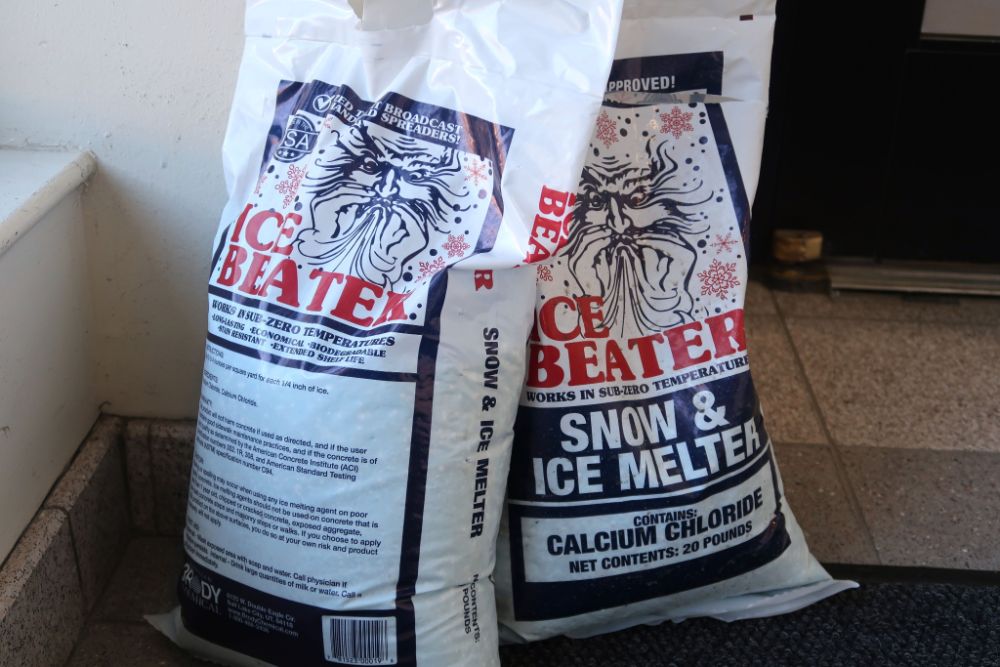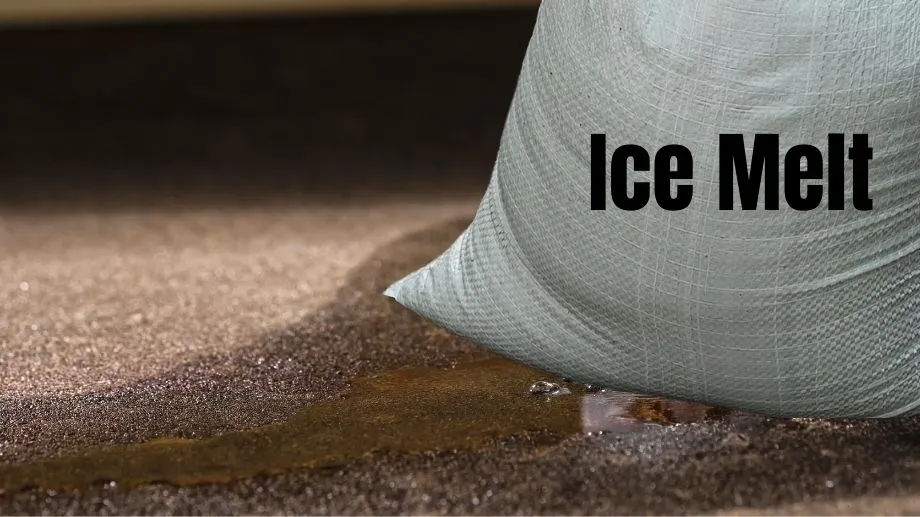If you’ve ever found an old packet of ice melt that’s turned to liquid or leaked on the floor then you might be wondering why this happens and how you can prevent it from happening.
While it can be frustrating when your ice melt leaks, the reason it does so is quite simple – and once you understand why this happens it’ll be easy for you to fix.
Ice melt turns liquid because it contains salts that attracts moisture from water vapor in the air. Eventually so much water gets absorbed it dissolves the salts and begins to turn liquid. Proper storage conditions and air-tight packaging ensure that moisture can’t be absorbed by the salts and prevents your ice melt from turning into a liquid.
There are things you can do to salvage ice melt that’s got wet and there's also a couple of things you can do to prevent your ice melt from turning liquid in the first place.
What Causes Ice Melt To Turn Liquid?
Ice melt is normally dry and gritty, just like the salt you use to flavor your dinner. However, salts like to pull moisture from the air (especially if the humidity is high).
This liquid then causes the salts to dissolve and form a liquid. Ice melt is hydrophilic (mixes with and attracts water), which is why it can turn to a liquid.
If these ingredients are exposed to the air when in storage then they will begin to absorb water and become wet.
Over time they will form into clumps and eventually the ice melt will absorb so much water it’ll begin to dissolve into the water and turn into a liquid or you'll even find that your ice melt bag is leaking liquid.
Poor Storage Is The Priority Concern

The primary cause of ice melts turning into liquids is inadequate storage. Often people will open a bag of ice melt and use some of it during winter and then just leave it in their garage or storage room with the top partially open.
Packaging that is not air-tight lets the salts absorb moisture from the air. Even little holes or punctures in an ice melt bag can allow moisture into the ice melt and turn it into a liquid.
So in a nutshell, the primary causes of your ice melt turning into a liquid are as follows:
- Most ice melts are made of salts like sodium chloride or calcium chloride. These absorb water and when not sealed in air-tight packaging will eventually turn into liquid.
- Storing your ice melt in a location near sharp objects that can make holes in the packaging will also cause liquids to form over time.
- Higher humidity environments can accelerate this process even further as there’s more moisture in the air for salts to absorb.
What To Do With Wet Ice Melt
If your ice melt gets wet there are actions you can take to salvage it:
- Spread the wet ice melt out in plastic containers (or on a piece of plastic) in the sun on a warm dry day to cause the moisture to evaporate
- Place the ice melt (exposed) in front of a fan to remove the moisture (just in a room or outside on a warm dry day where you won’t be breathing the salt).
- You could possibly put it in a low temperature oven to dry it out but this could be unwise depending on the type of ice melt used.
Keep It Dry And Away From Moisture
Once the ice melt has dried out, you’re going to want to store it in an airtight container in an area that’s away from any tool or equipment that can poke holes in its packaging.
So, the key point here:
- Wet ice melt can be dried with a dehumidifier in a room with low humidity, outside in the sun on a dry day or in front on a fan.
- Once dry, store the ice melt in an air-tight container in an area that’s away from sharp objects.
- You can store ice melt in an area that is dry.
Consider Making Liquid Ice Melt
If you feel your ice melt is so wet that it feels unsalvageable then you can actually mix it with and dissolve it in water to make a liquid ice melt. In winter this can be spread on your ice and it should still do the job.
Just monitor the ice melt for mold growth. Because it's so salty this shouldn't happen but it is possible.
If Ice Melt Has Turned Liquid Will It Still Work?
Ice melt that has turned liquid can work but it depends on just how much liquid there is. It is the salt in ice melt that lowers the melting point of water and causes ice to melt.
Ice melt that is wet is similar to brine (or liquid ice melt solutions) and as long as the salt content is intact it will still work. However, the issue is that wet ice melt has a tendency to clump together which can make it more difficult to spread over ice.
High concentrations of ice melt can damage concrete and other surfaces so being able to spread the ice melt thinly and evenly is usually quite important.
Ice melt that’s been liquid for a long period of time may become so diluted that it might not have much of an effect at all, but this would need to be an excessive amount of water and the ice melt would have to wash away somewhere. The ice melt would be unable to absorb this amount from the air alone.
Wet ice melt that’s leaked from a container can dry out and be hard to remove – it’ll also be unable to be used once it’s leaked out and dried onto the floor.
Can Wet Ice Melt Cause Damage?
Leaks can cause stains and can be toxic to pets or children – while an adult is unlikely to ingest this stuff it can potentially cause great intestinal discomfort to pets.
It’s also not good for plants if left in grassy areas – it leaches into the soil and the salts disrupt a plant's ability to absorb nutrients. Leaking ice melt can also damage concrete due to chemical reactions which cause deterioration over time.
Does Ice Melt Attract Moisture? Why?
Ice melt contains hydrophilic ingredients – this means that they attract water from the atmosphere around them.
Most ice melts contain ingredients like sodium chloride, magnesium chloride, or calcium chloride – these salts work by disrupting the formation of water into ice. This is what prevents the ice from forming and turns it into slush, rather than hard sheets of slippy ice that are dangerous to drive or walk on.
Summary
Your ice melt turns into a liquid for the following reasons:
- Ice melt is made from hydrophilic salts (they attract moisture from the air)
- Storing ice melt in a container that isn’t airtight means that it’ll begin to clump up and start to turn into a liquid
- Storing ice melt near sharp objects can cause wholes in the packaging
You can prevent ice melt from turning liquid by:
- Storing it in an air-tight container
- Making sure it’s stored in a dry area
- Storing it away from a sharp object that can damage its container




